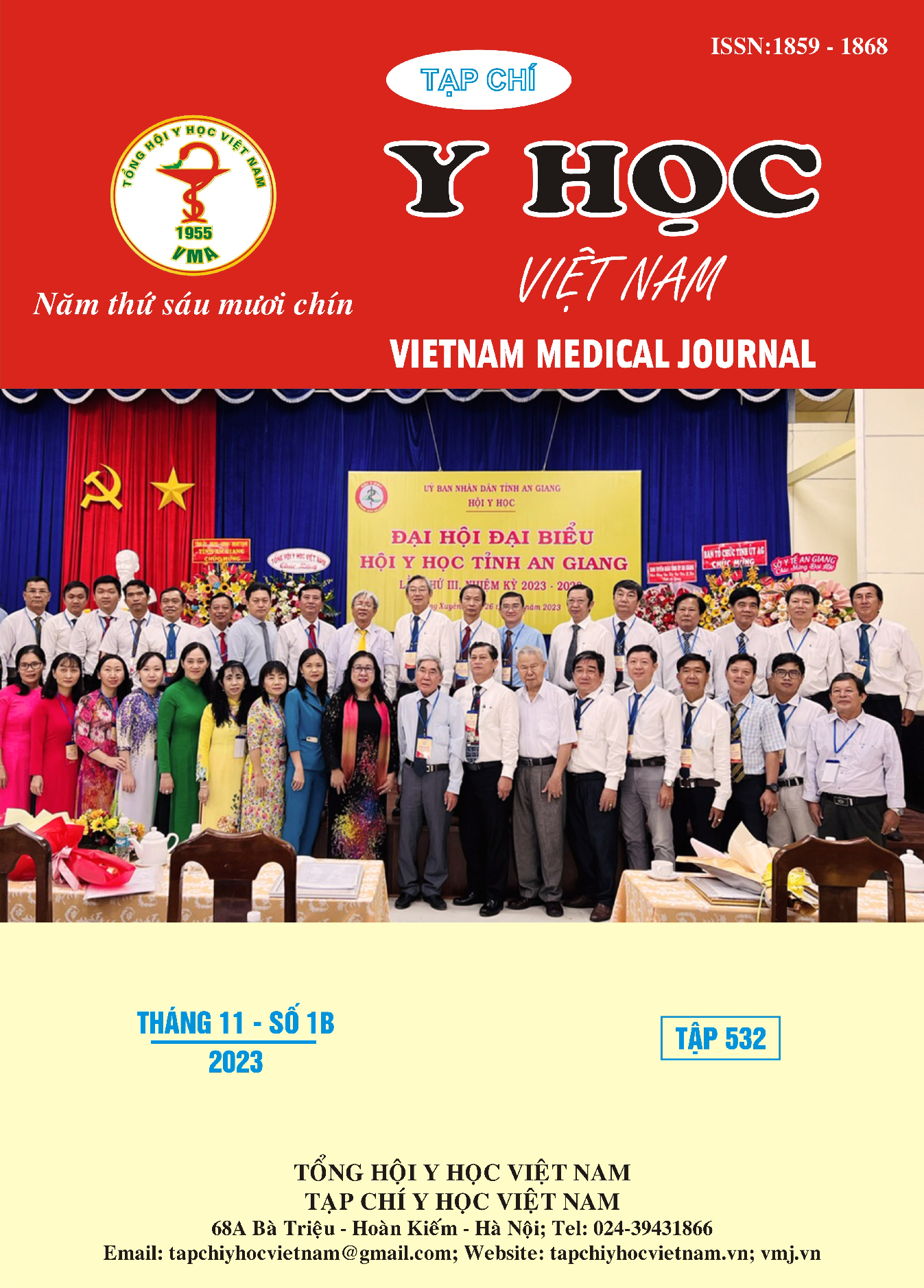SCOPING REVIEW THE OUTCOME OF TRANSLABYRINTHINE SURGERY FOR VESTIBULAR SCHWANNOMAS
Main Article Content
Abstract
Objective: Describe the outcome of translabyrinthine surgery for vestibular schwannomas (VS), with special focus on the tumor removal, postoperative facial nerve function, tumor control and complications Methods: A scoping review. Results: Out of a total of 380 articles searched on Pubmed database, the Cochrane library, the digital library Ha Noi Medical University has 15 research articles on the outcome of translabyrinthine surgery for vestibular schwannomas with 8983 patients, total removal was achieved in 82.3% (7391/8983) of cases; patients with evidence of regrowth in 2.8% (86/2986), concentrated mainly in incomplete resection tumors group. Among previously untreated patients, anatomical preservation of facial nerve was achieved in 95.94% (5046/5259) cases, and House Brackmann grade I or II was reached in 67.67% (5752/8944) patients. Facial nerve outcome depends significantly on tumor size and tumor removal. Surgical complications included cerebrospinal fluid leakage with significant incidence in 6.9% (401/5766) and others like meningitis, intracranial bleeding, and death. Conclusion: The translabyrinthine approach is safe and effective for the removal of VS. The complication rate is very low and tumor size is still the main factor influencing outcome after surgery.
Article Details
Keywords
Vestibular Schwannomas, Translabyrinthine
References
2. Heman-Ackah SE, Golfinos JG, Roland JT. Management of Surgical Complications and Failures in Acoustic Neuroma Surgery. Otolaryngol Clin North Am. 2012;45(2):455-470. doi:10.1016/ j.otc.2011.12.012
3. Chiang KW, Hsu SPC, Yang TF, Wang MC. Impact of extent of internal acoustic meatus tumor removal using translabyrinthine approach for acoustic neuroma surgery. PLoS ONE. 2021;16(8): e0253338. doi:10.1371/journal.pone. 0253338
4. Stastna D, Mannion R, Axon P, et al. Facial Nerve Function Outcome and Risk Factors in Resection of Large Cystic Vestibular Schwannomas. J Neurol Surg Part B Skull Base. 2021;83 (Suppl2): e216-e224. doi: 10.1055/s-0041-1725028
5. Zhang Z, Wang Z, Huang Q, Yang J, Wu H. Removal of Large or Giant Sporadic Vestibular Schwannomas via Translabyrinthine Approach: A Report of 115 Cases. ORL. 2012;74(5):271-277. doi:10.1159/000343791
6. Dandinarasaiah M, Prasad SC, Piccirillo E, et al. Facial Nerve Outcomes Following Total Excision of Vestibular Schwannoma by the Enlarged Translabyrinthine Approach. Otol Neurotol Off Publ Am Otol Soc Am Neurotol Soc Eur Acad Otol Neurotol. 2019;40(2):226-235. doi:10.1097/MAO.0000000000002068
7. Schwartz MS, Kari E, Strickland BM, et al. Evaluation of the Increased Use of Partial Resection of Large Vestibular Schwanommas: Facial Nerve Outcomes and Recurrence/Regrowth Rates. Otol Neurotol. 2013;34(8):1456-1464. doi:10.1097/MAO.0b013e3182976552


